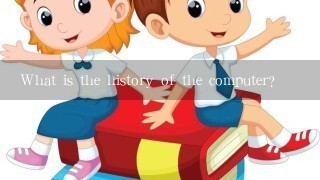What is the history of the computer?

Early History:
- 1941: Alan Turing proposes the idea of a universal computing machine, marking the birth of the field of computer science.
- 1943: Colossus, the first electronic computer, is built in Britain to code the Colossus code used in World War II.
- 1946: The ENIAC (Electronic Numerical Integrator and Computer), the first general-purpose electronic computer, is built in the United States.
Modern History:
- 1951: The IBM 701, the first commercially available computer, is introduced.
- 1953: The ENIAC is installed at the Pentagon and becomes the most powerful computer in the world.
- 1964: The Intel 4004, the first commercially available microprocessor, is introduced.
- 1971: IBM introduces the IBM PC, the first personal computer with a graphical user interface.
- 1975: Apple introduces the Apple II, the first commercially successful personal computer with a color display.
- 1981: IBM introduces the IBM PC AT, the first personal computer with a personal computer (PC/AT) architecture.
- 1984: Apple introduces the Macintosh, the first commercially successful personal computer with a graphical user interface.
- 1991: The World Wide Web is launched.
- 1994: Apple introduces the iPod, the first portable media player.
- 1995: Microsoft introduces the Windows operating system.
- 1997: Apple introduces the iPhone, the first smartphone with a touchscreen display.
Recent History:
- 2006: Apple introduces the iPad, the first tablet computer with a touchscreen display.
- 2011: Google introduces the Android operating system.
- 2015: Apple introduces the iPhone 6 and the Apple Watch, the first smartwatch with a touchscreen display.
- 2016: Microsoft introduces the Windows 10 operating system.
Current Trends:
- The development of artificial intelligence (AI) and machine learning (ML).
- The increasing use of cloud computing and mobile devices.
- The growing popularity of blockchain technology.
Key Milestones:
- The invention of the computer marked the beginning of the Information Age.
- The development of the microprocessor and the personal computer revolutionized communication and commerce.
- The rise of AI and ML has led to significant advancements in fields such as healthcare, finance, and transportation.





































































